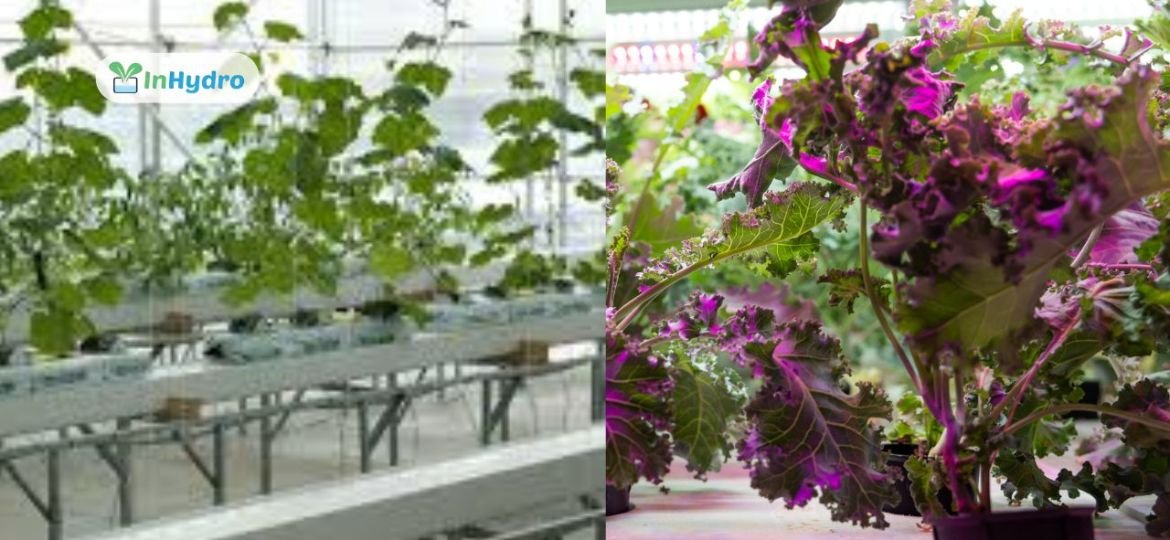
Leafy Greens vs. Vine Crops: Which Are Better for Hydroponic Farming in India?
As India embraces innovative farming practices to meet the growing demand for fresh, high-quality produce, hydroponic farming has gained significant attention. This soil-free cultivation method allows farmers to grow crops more efficiently, with minimal resources and space. However, choosing the right crops for hydroponic farming is crucial to ensure profitability and sustainability.
Two popular categories of crops for hydroponic systems are leafy greens and vine crops. Each has unique advantages and challenges. In this article, we’ll explore the benefits and considerations of both, helping Indian farmers make an informed decision based on market trends, resources, and consumer demand.
Why Hydroponics is Thriving in India
India’s population growth, urbanization, and limited arable land have created a need for efficient farming methods. Hydroponics addresses these challenges by offering:
- Year-round production in controlled environments.
- Reduced water usage (up to 90% less than soil farming).
- The ability to grow crops in urban areas, like rooftops and warehouses.
- Pesticide-free produce that meets health-conscious consumer demands.
With these benefits in mind, choosing the right crop can significantly impact a farm’s profitability.
Leafy Greens: A Staple for Hydroponic Farming
Popular Examples: Spinach, lettuce, kale, coriander, amaranth, and basil.
Advantages
- Short Growth Cycles: Leafy greens grow quickly, often ready for harvest in 30–45 days. This allows multiple harvests per year, maximizing profits.
- High Demand in India: Leafy greens are a dietary staple, used in everything from salads to curries. Their demand is strong in urban markets and restaurants.
- Low Resource Requirements: They require minimal space, making them ideal for small-scale setups and vertical systems.
- Ease of Cultivation: Leafy greens thrive in simpler hydroponic systems like the Nutrient Film Technique (NFT) or Deep Water Culture (DWC).
Challenges
- Perishability: Leafy greens have a short shelf life, necessitating efficient storage and distribution.
- Lower Profit Margins: Due to their common availability, competition can drive prices down.
Vine Crops: A Profitable Investment
Popular Examples: Tomatoes, cucumbers, bell peppers, and zucchini.
Advantages
- High Market Value: Vine crops often fetch premium prices, especially when grown organically or hydroponically.
- Longer Shelf Life: Compared to leafy greens, vine crops are less perishable, making them easier to transport and sell.
- Diverse Uses: These crops are widely used in Indian households, restaurants, and processed food industries.
- Scalability: Vine crops grow well in advanced systems like Dutch Bucket setups, which can be scaled up for larger yields.
Challenges
- Longer Growth Cycles: Vine crops take 60–90 days to mature, resulting in fewer harvests per year.
- Higher Initial Investment: Setting up systems for vine crops requires more space and resources, including trellising for support.
- Disease Management: Vine crops are more susceptible to diseases like powdery mildew, requiring close monitoring.
Factors to Consider for Indian Hydroponic Farmers
1. Market Demand
- Urban consumers in cities like Mumbai, Delhi, and Bengaluru are increasingly seeking premium, pesticide-free produce.
- Restaurants and cafes often demand leafy greens for salads and vine crops for gourmet dishes.
2. Available Space
- Small-scale farmers in urban areas may benefit from focusing on leafy greens using vertical systems.
- Farmers with larger setups can explore vine crops to diversify and increase revenue.
3. Resource Availability
- Leafy greens require less water, nutrients, and energy, making them ideal for beginners.
- Vine crops demand higher inputs but offer greater long-term profitability.
4. Profitability Goals
- For consistent cash flow, leafy greens are a safer choice due to shorter growth cycles.
- Vine crops, while requiring patience, can yield higher returns per kilogram.
Which is Better for Indian Hydroponic Farming?
There’s no one-size-fits-all answer—it depends on your goals, resources, and market. Here’s a quick comparison:
Factor | Leafy Greens | Vine Crops |
Growth Cycle | 30–45 days | 60–90 days |
Profitability | Lower but consistent | Higher but requires patience |
Space Requirements | Minimal (ideal for vertical systems) | Larger area needed |
Market Demand | High in urban households and restaurants | Premium segment, niche markets |
Investment | Low to moderate | Higher initial investment |
A Balanced Approach
For Indian farmers venturing into hydroponics, a mixed approach can be the most rewarding. Combining leafy greens and vine crops allows you to:
- Generate steady income through quick-harvesting leafy greens.
- Build long-term profits by selling premium vine crops.
- Diversify your offerings to meet a wider range of customer demands.
Conclusion
Hydroponic farming offers immense potential in India, where the demand for fresh, pesticide-free produce is growing rapidly. Both leafy greens and vine crops have their advantages, and the best choice depends on your farming goals, market, and available resources.
Whether you’re starting small or scaling up, companies like InHydro can provide the right systems, equipment, and guidance to help you succeed. With their expertise, you can confidently explore hydroponics and contribute to a sustainable, modern agricultural future for India.
Start your hydroponic journey today—grow smarter, greener, and more profitably!

